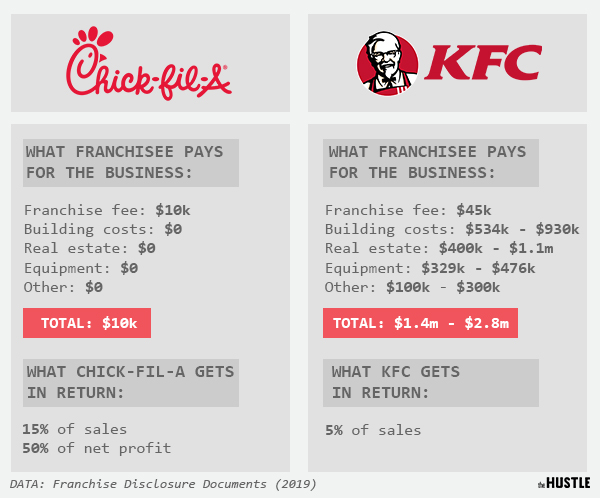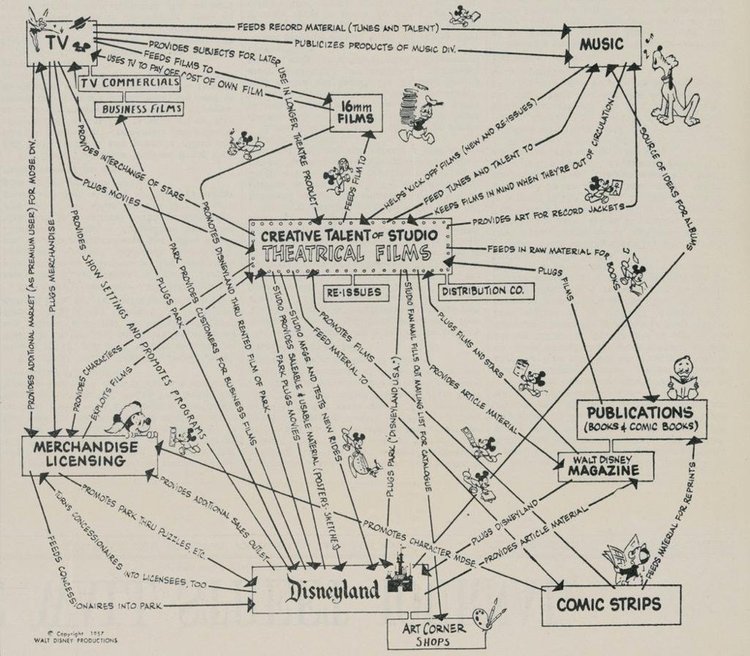Have you ever wondered why some companies like Disney, Chick-Fil-A, Trader Joe, Costco, Apple, etc., have had margins on average far ahead of rivals for decades? Could it be their strategy? But what is strategy? Learn more about strategy in this article or reach out for strategy tutoring. We address the following strategic topics here:
- What is Strategy – NOT
- What is Strategy
- Strategic Positions
- Variety-based positioning
- Needs-based positioning
- Access-based positioning
- Tradeoffs
- Strategic Fit and Benefits of Fit
- Why companies fail to have a clear strategy
- How to Grow – while staying true to your strategy?
GraduateTutor provides strategy tutoring for MBA students and professionals, and business owners needing to review their strategy. While many topics are usually requested for tutoring, the ones that show up often include – what is strategy?, industry analysis, vertical integration and scope of the firm, diversification, global strategy & internationalization, measuring and setting targets, organization and implementation, competitive advantage, sustainability, M&A, etc. However, the most often misunderstood, but one that is a fundamental topic is, by far, the topic ‘What is Strategy!’ We use Michael Porter’s HBR article titled ‘What is Strategy’ as the foundation to teach what strategy is.
What is Strategy? Some Background
Michael Porter first redefined strategy and industry analysis in the article ‘How Competitive Forces Shape Strategy’ in 1979. This was a landmark piece in 1979, but not because it was a rarely discussed topic. Peter Drucker has been talking about strategy since the 1950s, even if it was linked mostly with competition based on price. Many others, including D.G Moore, W.L. Warner, N.H. Martin, H. Mintzberg, M. Mintzberg, T.C. Schelling, etc. have written articles on strategy around the 1950s, 60s and 70s. However, it is Michael Porter’s articles ‘How Competitive Forces Shape Strategy,’ also commonly referred to as the ‘Porter’s 5 forces’ and ‘What is Strategy?’ that have stood the test of time. These articles were reprinted in the HBR in 1996, and 2008 with minor modifications. These and other pieces have also been printed in numerous other publications, and his books have been translated into over 17 languages.
What is Strategy – NOT
Michael Porter teaches us What is Strategy by first clarifying What is NOT Strategy. He states that operational effectiveness is not a strategy. He clarifies that operational effectiveness may be helpful or likely necessary for sustained success. His main point is that operational effectiveness is NOT a sufficient condition to have an effective strategy. Porter felt the need to clarify this specifically because during the 80s and 90s, the success of Japanese car companies caused operational efficiency to be the focus of most strategy professionals. He also digs at the outsourcing mantra that had become a key strategic factor and explained that outsourcing everything and focusing on only one or a few competencies is not necessarily strategy. In fact, Michael Porter believes the opposite: He believes that good strategy is based on doing many things well and crucially the fit or level of integration between the chosen activities.
What is Strategy?
Michael Porter then goes on to explain ‘What is Strategy.’ Essentially it means being unique! Porter lays this out on three planks. He explains that strategy is about:
- choosing a unique set of activities that enables a firm or company to provide
- a unique mix of value to
- a specific set of customers that appreciates and is willing to pay for that value.
Please note that the first point listed above is choosing a unique set of activities. This essentially means you cannot or must not be doing what others are doing or doing the same thing in the same manner. This indicates that you must NOT be doing what everyone else is doing! Strategy is about focus and clarity. It is not about a specific offering or product or a quarter or even a year but about a set of decisions that is consistent over a long period. There may be times where strategies need to change – for example, if the industry structure changes – but these times are rarer than we expect.
Strategic Positions
Strategic positioning is not about being a niche or having a broad offering. Strategic positions are arrived at only by carefully selecting your activities to make you unique. Unique – by definition – implies that these activities are different from competitors or the combination of activities is different from competitors. It implies that you will have a different value proposition compared to your competitors. This, according to Porter, is the essence of strategy. Competitive strategy can only come from this foundation.
A great example of a unique position. Or doing the same activities but differently is Chick-Fil-A!

How can you find a unique strategic position?
According to Michael Porter, strategic positions can be derived in three ways. 1) variety-based positioning, 2) needs-based positioning, and 3) access-based positioning.
Offering Matrix or Variety-Based Positioning
By variety-based positioning, Michael Porter is referring to the choice of products or services being offered. Here the focus is on the products or services being offered instead of specific customer segments being targeted. A niche player is often highlighted as an example of this type of positioning. A niche player can pick customers who are overserved – i.e., provided many options that they are not using or value but have to bear the cost. Alternatively, a niche player can pick customers who are not served sufficiently or underserved – i.e., NOT provided many options that this segment values and are willing to pay for.
Customer segments based or needs-based positioning
By needs-based positioning, Michael Porter refers to serving the needs of a specific target segment of the market. By focusing on only one segment, the firm can better serve this customer or segment better than others or at a lower price point when compared to others.
Channel-based or access-based positioning
By access-based positioning, Michael Porter is referring, once again, to only serving a segment of customers but now segmented by the way this segment accesses the product or service. This segment could be based on geography too.
Combinations of Positions
Firms could use a combination of the three types of positioning approaches listed above too. What is important is to truly understand the customer’s needs and how to serve that segment most efficiently. Finding that perfect match is of paramount importance and will drive the choice of activities selected. It is also important to realize that there are always different sets of tastes and preferences in any market. There is no one right answer to strategic position.
Tradeoffs
According to Michael Porter, while there is no one right answer to a strategic position, there will be or must be trade-offs! The word trade-off indicates that you are giving up something to gain something else. But by giving up something, you get better at something else. Michael Porter emphasizes that you must give up something to gain something and captures that essence in the word tradeoffs.
Trade-offs are essential to distinguish yourself when and if you have to deal with firms repositioning to your position. You are protecting yourself by being better entrenched in that position and, therefore, difficult to replace. Trade-offs are essential to distinguish yourself when you have straddlers – those also trying to target your customers from nearby positions.
Trade-offs are necessary because of 1) brand positioning, 2) unique activities require different components in the activity map, and 3) clarity in decision making in the entire organization.
There are many examples of trade-offs companies make. Costco is a great example: They offer only one version of every common consumer product! That means they have to NOT offer so many other great products!
Activity Fit and Strategy
Michael Porter then describes how a strategy builds a competitive advantage that is sustainable or termed as a sustainable competitive advantage. He uses the term ‘fit’ to describe this. Essentially, fit is the interweaving of the unique activities to form a far more powerful moat against competitors. Fit is essential to defend against competitors from easily reposition into your market (repositioners) and/or also offering your service/targeting your customers efficiently (straddlers).
He says fit works at three levels.
- First-order fit is the bare essential requirement for a strategy to be effective. It is the consistency between all the chosen activities. To have a first-order fit, there must be zero non-essential function or activity that detracts from or dilutes the overall strategy. I think of it as a puzzle where the pieces neatly insert itself into one and another with no ill-fitting edges.
- Second-order fit goes further than simple consistency. Second-order fit happens when chosen activities strengthen and reinforce each other. I like Michael Porter’s analogy of the strength of a chain to explain the concept of fit in strategy. Unlike the truth of the chain or the fact that a chain is only as strong as its weakest link, in this analogy i.e. when there is second-order fit, the chain becomes as strong as its strongest link! The unique activities reinforce each other and support the weakest link as they are all intertwined.
- Third-order fit takes you far above the first two. Michael Porter calls it the “optimization of effort”. I like to akin to a puzzle that is now glued together! This gives your strategy a competitive strength that is difficult for competitors to attack, copy or even understand.
Second and third-order fit are not easy to obtain. It often requires clarity in decision making and focus over many years to obtain the benefits of the second and third-order of fit.
Walt Disney understood strategic fit! Here is his idea on a napkin from 1957!

Benefits of Fit
The results of the different levels of fit are what most strategy designers desire. The benefits of fit include lower cost of operations, a differentiated position, and a position that is difficult for competitors to even truly understand. Most important is that it leads to a competitive advantage that can be sustained because it is not easy to imitate or replicate.
Why companies fail to have a clear strategy
- A misunderstanding of what is strategy.
- Lack of strong leaders who have the will to make the trade-offs required.
- Desire for growth causing them to serve nearby markets/customers or add activities.
- Wanting to serve the whole market
How to Grow – while staying true to your strategy?
There are essentially two ways to grow while staying true to your strategy:
- Double down: Companies and firms can grow while staying true to its strategy by dominating your niche. In other words, double down on your strategy and capture an increasing share of that subsegment. Double down or deepening a strategic position could include becoming more distinctive, improving fit among the activities selected, fine-tuning, and improving the brand positioning among the target customer/channel segment.
- Extension: Offer products/services extensions that utilize current strengths and activity map. This ensures no dilution of the activity fit that brought about current strengths but increases products and services being offered thereby increasing revenues and profits. Since it leverages the existing activity system, competitors would find it difficult or expensive to compete with your firm.
To summarize, strategy is about choosing a unique set of activities that enables a firm or company to provide a unique mix of value to a specific set of customers that appreciates and is willing to pay for that product or service.
Do let us know if we can assist you in understanding what strategy is or how to apply the concepts covered in the foundational article “What is Strategy.” We will cover the key points Michael Porter discusses in the article ‘How Competitive Forces Shape Strategy’ in another post.